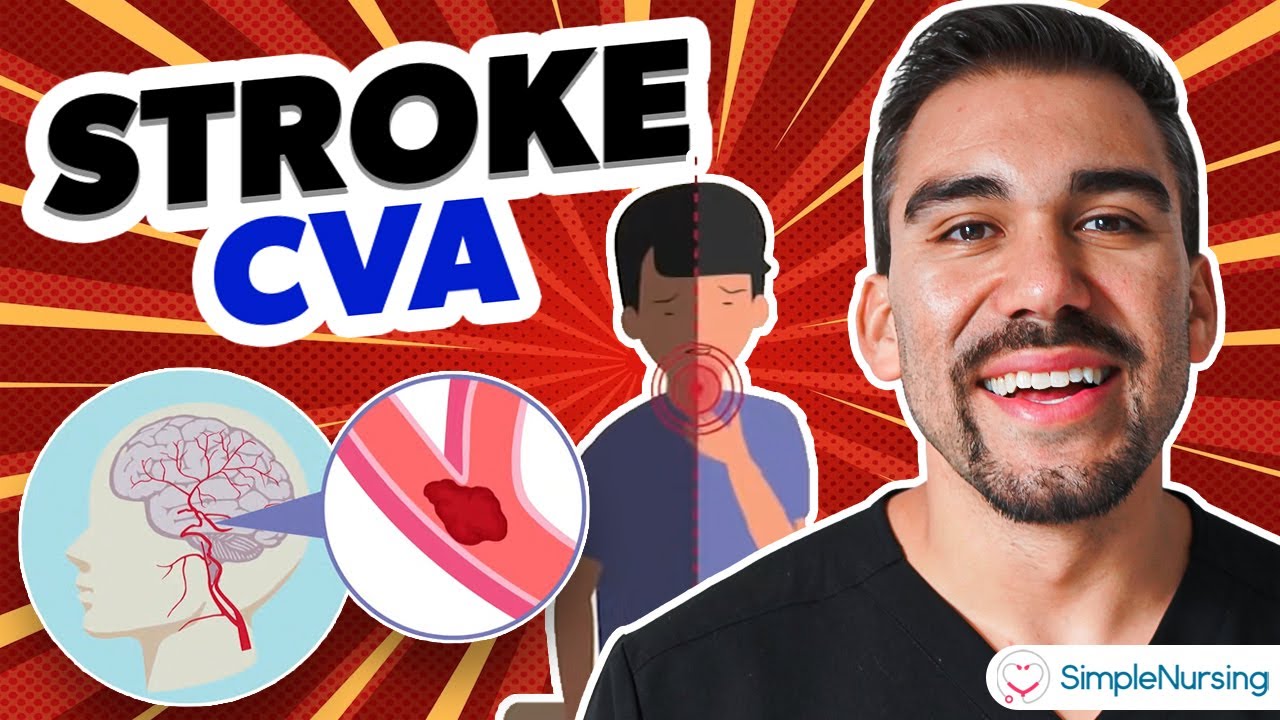Ischemic Stroke | Lisa Klein
Summary
TLDRThis lecture by Lisa Klein delves into ischemic strokes, accounting for 85% of all strokes, with a focus on their causes, including atherosclerosis and embolism. It highlights the significance of Transient Ischemic Attacks (TIAs) as warning signs for impending strokes, emphasizing the critical need for timely medical intervention. The lecture outlines risk factors, both modifiable and non-modifiable, and introduces the concept of the ischemic penumbra—an area around the core infarct that can be salvaged. Treatment options like thrombolytic therapy and mechanical thrombectomy are discussed, underscoring the importance of acting quickly to improve patient outcomes.
Takeaways
- 🧠 Ischemic strokes account for 80-85% of all strokes, caused by blood flow obstruction to the brain.
- ⚡ A transient ischemic attack (TIA) is a mini-stroke and a critical warning sign for future strokes.
- 📉 Risk factors for ischemic strokes include hypertension, smoking, diabetes, and poor diet, among others.
- 👵 The risk of stroke doubles every decade after age 55, emphasizing the importance of age as a non-modifiable risk factor.
- 🚨 TIAs can precede strokes, with 10-20% of TIA patients experiencing a stroke within 90 days.
- 🩸 The ischemic penumbra is the area surrounding the core infarction that contains salvageable cells at risk of death.
- 💊 Treatment options for acute ischemic strokes include thrombolytic therapy (e.g., tPA) and mechanical thrombectomy.
- 📊 Only 27% of patients arrive at the hospital within the critical time frame for tPA treatment, highlighting the need for faster responses.
- 👩⚕️ Risk factors such as family history, race, and gender can increase stroke risk but are outside individual control.
- 🧪 Public education on recognizing TIA symptoms is vital for early intervention and reducing the likelihood of severe strokes.
Q & A
What is the primary focus of this lecture?
-The primary focus of this lecture is ischemic strokes.
What are the two types of strokes discussed in the lecture?
-The two types of strokes discussed are ischemic strokes and hemorrhagic strokes.
What are the main causes of ischemic strokes?
-The main causes of ischemic strokes include atherosclerosis, embolism (often from the heart due to atrial fibrillation), lacunar strokes, and embolic strokes of undetermined source (ESUS).
What is the ischemic penumbra?
-The ischemic penumbra is the area surrounding the core infarction that contains minimally surviving cells and is the target for medical interventions to restore blood flow.
What are transient ischemic attacks (TIAs)?
-TIAs, or mini strokes, are transient episodes of neurological dysfunction caused by focal brain ischemia without acute infarction, and they serve as warning signs for impending strokes.
What is the ABCD2 score used for?
-The ABCD2 score is used to assess the risk of a stroke in patients who arrive with probable TIAs, helping determine the urgency of medical intervention.
What are some controllable risk factors for ischemic stroke?
-Controllable risk factors include hypertension, smoking, poorly controlled diabetes, poor diet, physical inactivity, obesity, high cholesterol, and atrial fibrillation.
What treatments are available for acute ischemic stroke?
-Treatments include intravenous thrombolytic therapy with Alteplase (tPA), endovascular recanalization with mechanical thrombectomy, and combined therapies if patients present early enough.
How critical is the time factor in treating ischemic strokes?
-Time is critical, as therapies like tPA must be administered within three to four and a half hours of stroke onset to be effective.
What percentage of stroke patients arrive at the hospital within the critical time window for tPA treatment?
-Only about 27% of stroke patients arrive at the hospital within zero to three hours, meaning many miss the opportunity for tPA treatment.
Outlines

Esta sección está disponible solo para usuarios con suscripción. Por favor, mejora tu plan para acceder a esta parte.
Mejorar ahoraMindmap

Esta sección está disponible solo para usuarios con suscripción. Por favor, mejora tu plan para acceder a esta parte.
Mejorar ahoraKeywords

Esta sección está disponible solo para usuarios con suscripción. Por favor, mejora tu plan para acceder a esta parte.
Mejorar ahoraHighlights

Esta sección está disponible solo para usuarios con suscripción. Por favor, mejora tu plan para acceder a esta parte.
Mejorar ahoraTranscripts

Esta sección está disponible solo para usuarios con suscripción. Por favor, mejora tu plan para acceder a esta parte.
Mejorar ahoraVer Más Videos Relacionados

Overview of Ischemic and Hemorrhagic Stroke | Clinical Neurology

Stroke CVA (Cerebrovascular Accident) Hemorrhagic, Ischemic NCLEX RN & LPN NURSING

Brain Stroke, Types of, Causes, Pathology, Symptoms, Treatment and Prevention, Animation.

Ischemic Stroke - causes, symptoms, diagnosis, treatment, pathology

STROKE Lengkap - Klasifikasi, Patofisiologi, Skor Siriraj, Gajah Mada, Latihan Soal UKMPPD

Cardiovascular Disorders - Part 2 (arteries)
5.0 / 5 (0 votes)
